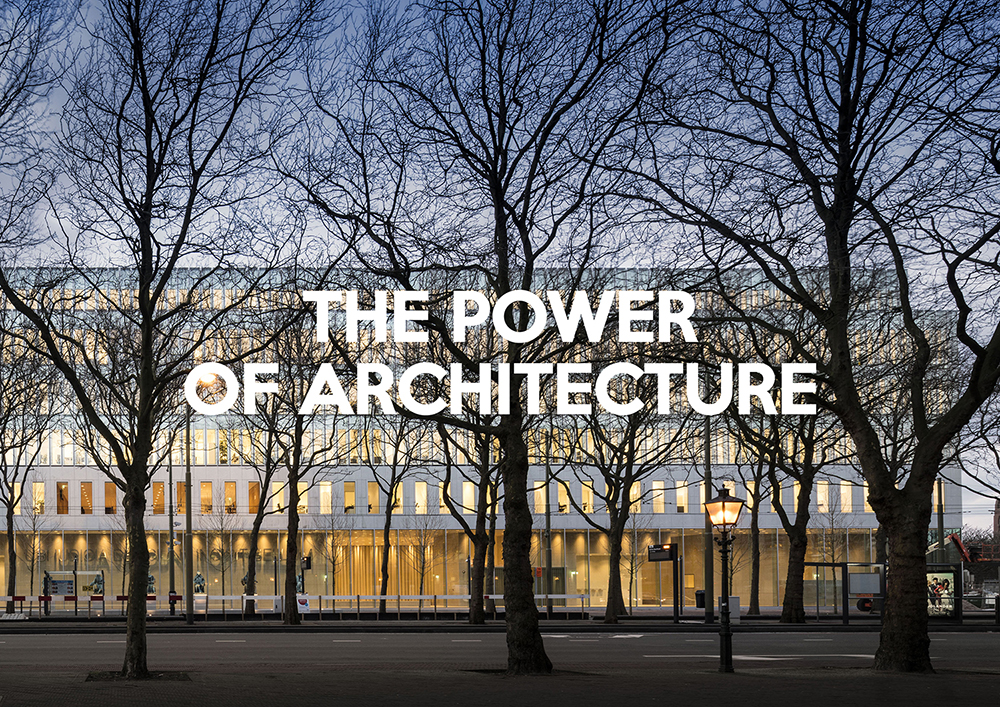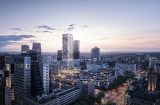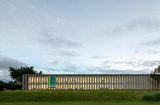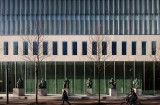The Power of Architecture
On Friday April 22, 2016, starting from 6 PM, at Garage Rotterdam, Kees Kaan (KAAN Architecten) and Bjarne Hammer (Schmidt Hammer Lassen Architects) will present the new projects of high court buildings just completed in The Hague: the Supreme Court of the Netherlands and the International Criminal Court. The lectures will be followed by a public debate moderated by Salomon Frausto.

Two distinguished high courts have just been built in the city of The Hague (NL):
• the Supreme Court of the Netherlands on Korte Voorhout, designed by KAAN Architecten (Rotterdam, NL)
• the International Criminal Court on the corner between Oude Waalsdorperweg and Van Alkemadelaan, designed by Schmidt Hammer Lassen Architects (Copenhagen, DK)
Constitutional law usually requires that court proceedings, and therefore the court buildings as well, are open to the public. Openness must be guaranteed by providing a suitably accessible location in an urban environment and by ensuring appropriate security measures. Additionally, these buildings must also offer sheltered environments allowing comfortable working conditions. The buildings need to be both inviting and secured, with separate routes and accessibility for the public, the judges and the defendants. Can these seemingly contradictory requisites coincide architecturally in an appealing and contemporary way? Queries about the power of architecture can also extend to further issues. A classical building exhibiting a personified Justitia on its pediment is easily identified as a courthouse, however this does not necessarily give expression to state democracy. In these times of terrorism, can the Rechtsstaat (Rule of Law) find an appropriate interpretation through contemporary architectural methods?
Garage Rotterdam, Goudsewagenstraat 27, Rotterdam
Friday April 22nd, 2016
18:00 – 21:30
Free entrance
programme:
18:00 opening and welcome speech
18:40 Kees Kaan introduces the Supreme Court of the Netherland, The Hague
19:00 Bjarne Hammer introduces the International Criminal Court, The Hague
19:20 the moderator will animate a debate with the speakers and the public
20:00 drinks
Supreme Court of the Netherlands
As the highest court of law in the land, the Supreme Court passes researched and reasoned judgements on everyday affairs in civil society. It is a public institution that supports a state based on justice and integrity, and is at the same time an organisation that operates in retreat in order to formulate well-grounded rulings and findings. The dualities of the Supreme Court on several levels, the real-world yet also fragile aspects, the public yet also closed character – these were used as a source of inspiration for the design.
A majestic gateway is formed by the plane trees of the royal route and the row of six bronze statues of legal scholars. This space flows over into the entrance hall of the building. The inviting hall and its courtrooms seem to have been chiselled from a solid block of stone. It serves as a sturdy base for a superstructure of glass panels and slender steel latticework. Distinguished and functional, heavy and light, sturdy and refined – all exist alongside routine business, on which rulings are passed with great clarity of mind. With light wells over centrally located atriums, the interior achieves the elegance of an urban palace, appropriate to the status of the Supreme Court.

International Criminal Court
The ICC is not just a building or a headquarter, in every aspect it has integrated the security that is required of one of the most secured buildings in the world, either built into the landscape or within the building itself. It is a statement of an independent architecture, open-minded and accessible.
The new permanent premises appear as a sculptural abstraction, a composition of six volumes, firmly anchored to the site and rising from the surrounding dune landscape. The tallest of the volumes is the Court Tower that rises up as a green element. The architectural idea is to continue the cultivated parterre gardens from the ground floor level, as a cladding on the Court Tower. Historically, gardens have always existed as part of all cultures and all religions. With flowers and plants from each of the regional groups of states, the parterre garden rises up as a symbol of unity, regardless of nationality and culture. The remaining volumes, the office towers, are draped in a tapestry grid, almost like embroidery.




